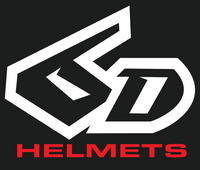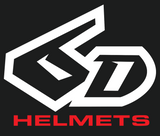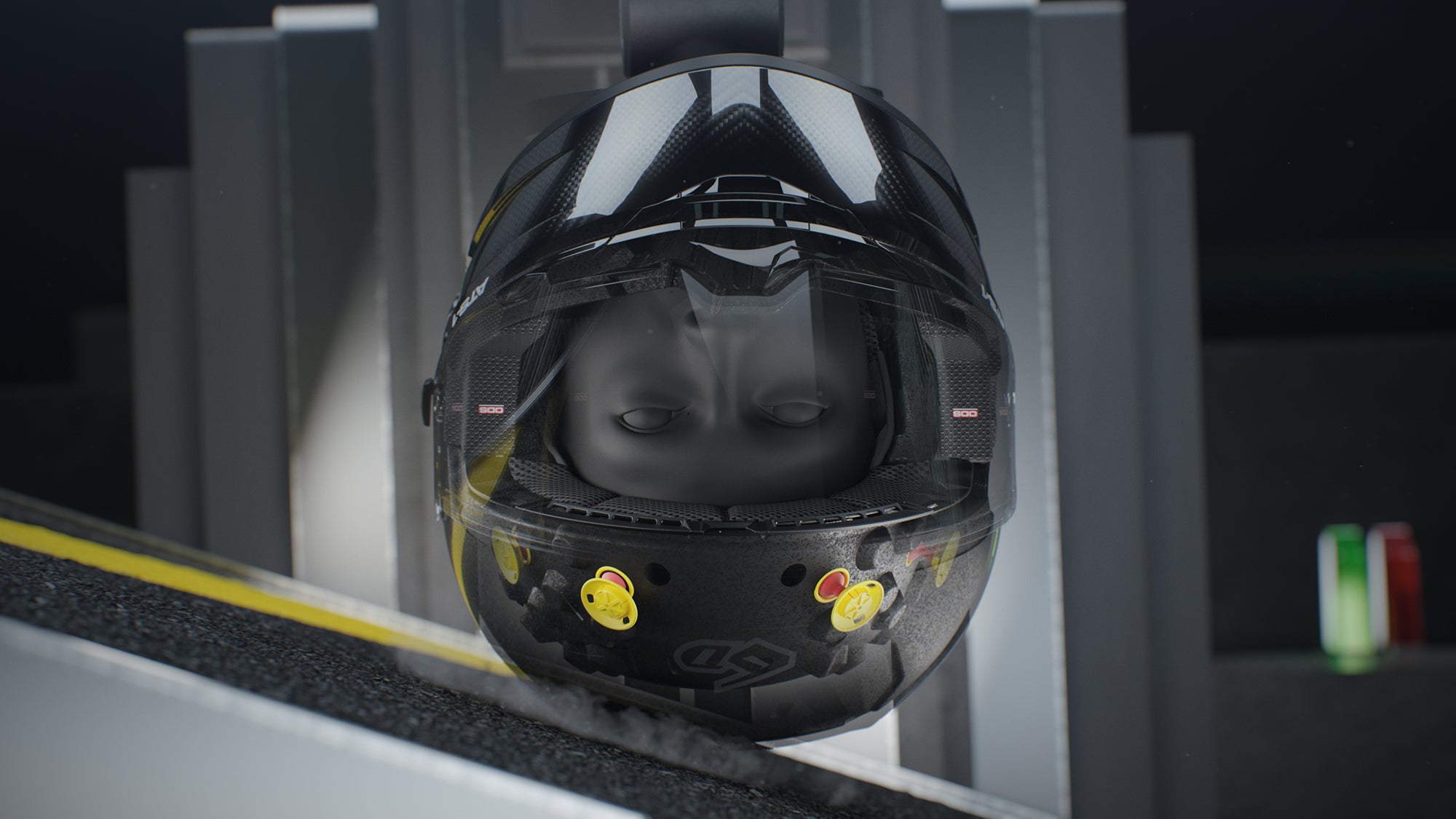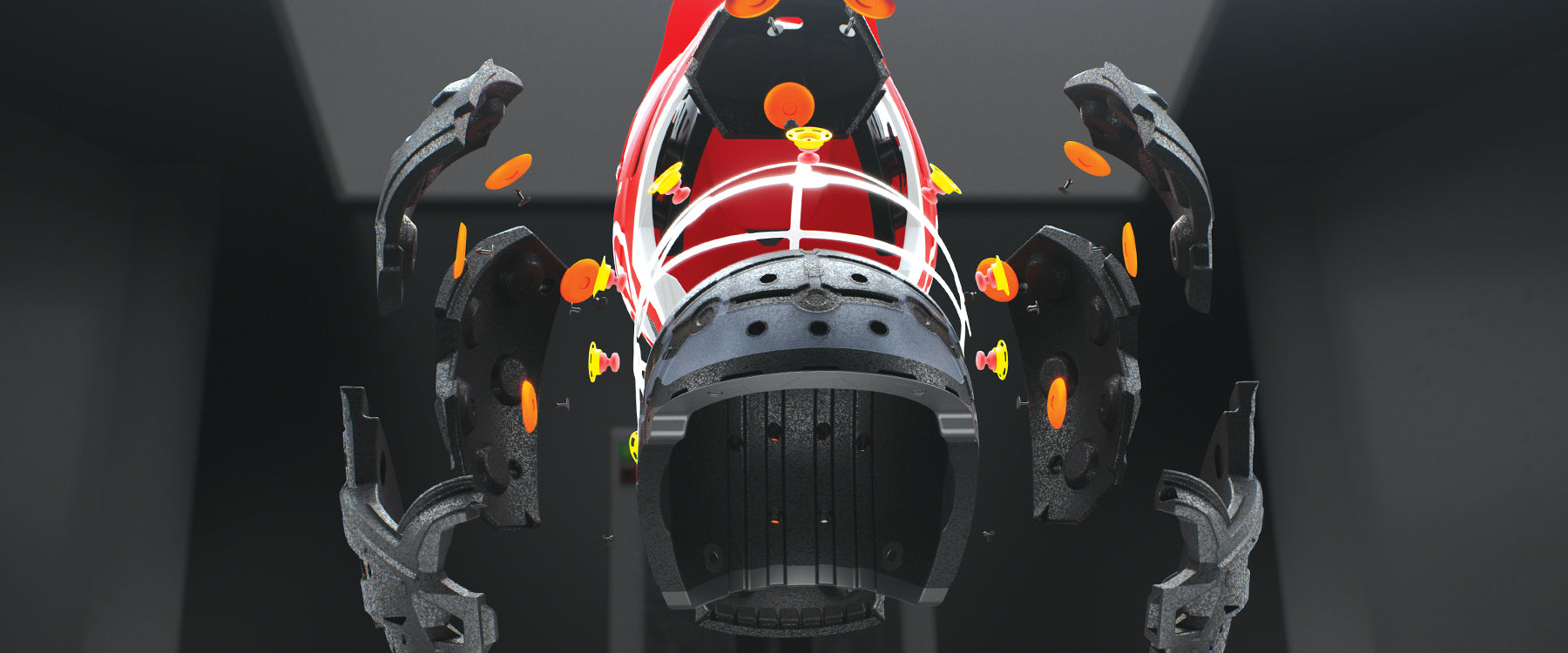"ODS is basically, suspension for your head."
Omni-Directional Suspension™ technology is an active, in-helmet suspension and energy management system. The system reduces energy transfer to the brain over a wider range of energy demands, including low, mid, and high-velocity impacts for both linear and angular acceleration. This is achieved through the use of a suspended dual-liner assembly that can displace and shear in any direction upon impact.
Key Components of Omni-Directional Suspension™
Technical FAQs
Omni-Directional Suspension™ (ODS™) is 6D's patented technology that sets our helmets apart from others in the marketplace. ODS™ offers an unparalleled safety solution, granting the suspended inner liner 6 degrees of freedom in the event of an accident. This innovative liner technology effectively reduces both angular and linear accelerations experienced by the head form.Omni-Directional Suspension™ (ODS™) is 6D's patented technology that sets their helmets apart from others in the marketplace. ODS™ offers an unparalleled safety solution, granting the suspended inner liner 6 degrees of freedom in the event of an accident. This innovative liner technology effectively reduces both angular and linear accelerations experienced by the head form.
ODS™ works by enabling three-dimensional displacement of an inner suspended liner during an accident, and subsequently recentering itself once the loading event is concluded. This dynamic capability of ODS™ allows for optimal protection and response to impact forces.
Helmet certification standards are a set of guidelines and requirements that helmets must meet to be considered safe and effective for their intended use. Various organizations and regulatory bodies establish these standards worldwide. Here are some commonly recognized helmet certification standards:
- DOT (Department of Transportation)
- ECE (Economic Commission for Europe)
- AU/NZS (Australia and New Zealand)
- ASTM (American Society for Testing and Materials)
- CPSC (Consumer Product Safety Commission)
- NTA (Nederlandse Technische Afspraak)
- Virginia Tech Helmet Testing
All 6D helmets undergo rigorous testing throughout the development process at the factory level. Subsequently, final prototype helmets are subjected to additional testing at an independent third-party laboratory based in the United States. Once all testing is satisfactorily completed, the helmets are then subjected to the certification standards mandated by the respective government authorities. It is important to note that the specific certification standards required may vary depending on the helmet model and target markets.
Bob Weber and Robert Reisinger, the two founding members of 6D Helmets, are the inventors of the unique and pioneering technology that distinguishes 6D Helmets. Bob and Robert have played a crucial role in revolutionizing helmet safety and enhancing protection for riders.
No, ODS™ is found exclusively in 6D Helmets.
6D Helmets and Dynamic Research Inc. collaborated to participate in an engineering challenge sponsored by the NFL. The objective of the challenge was to discover an exceptional energy management material. Leveraging the innovative ODS technology, the team successfully developed a high-performing material solution that surpassed competitors, leading them to win the prestigious $500,000.00 award. The challenge received submissions from over 120 entities and individuals, all vying for consideration of their material applications by the NFL.
6D Helmets embody a design and engineering process rooted in the United States, where meticulous attention is given to every detail. To bring these exceptional designs to life, 6D Helmets entrusts their manufacturing expertise to a skilled team in China. Through this collaborative approach, the company combines the best of American ingenuity with global manufacturing capabilities, delivering helmets that meet the highest standards of quality and craftsmanship.
Low threshold energy management refers to a helmet's ability to effectively manage and mitigate the impact forces associated with low-energy or low-velocity impacts. These are typically impacts that occur at lower speeds or involve less force compared to high-velocity impacts.
While traditional helmet testing and certification standards primarily focus on high-velocity impacts, low threshold energy management recognizes the importance of addressing the risks posed by lower-energy impacts. These impacts may occur in various real-world scenarios, such as minor falls, collisions at lower speeds, or other low-impact incidents.
Broad range protection refers to an enhanced level of brain protection offered by a helmet across a wide spectrum of impacts, ranging from low-velocity to high-velocity impacts. In other words, it signifies that the helmet is designed to mitigate the risk of head injuries not only during high-velocity impacts, which are typically addressed by certification standards, but also during lower-velocity impacts that are more common in real-world accidents.
Angular acceleration refers to the rotational forces experienced by the head during an impact. When a helmeted head undergoes an angular acceleration, it means there is a change in the head's rotational velocity over time.
During an impact, especially in situations involving oblique or rotational forces, the head can experience angular acceleration. This rotational movement can result in the brain twisting or shearing within the skull, potentially leading to traumatic brain injuries.
Helmets designed to address angular acceleration aim to reduce the rotational forces transmitted to the head upon impact.
Since the introduction of the 6D helmet, manufacturers have been scrambling to enhance helmet performance, with varying degrees of success. One of the primary challenges they face is the natural oval shape of the human head, which limits the helmet's ability to shear in relation to the skull along two of the three primary axes: X, Y, and Z. This limitation arises because the inner surface of the helmet's liner tends to bind during rotational movements, making contact with the four corners of the skull in one direction and the cheekbones and jaw in another direction.
6D's ODS™ technology features a unique design, with a shearable suspension system situated between two EPS foam liners that are shaped in a more spherical manner, resembling a ball and socket. This innovative design allows for 6 degrees (6D) of free-motion displacement during an impact, irrespective of the wearer's head shape, angle of impact, or helmet fit. ODS™ effectively decouples the outer surface of the helmet from the wearer's head, while its isolation dampers activate prior to the EPS foam. This exceptional capability enables ODS™ to mitigate impact forces across a range of impact velocities, angles, and both linear and angular acceleration. Unlike simple shear-plane technologies, ODS™ is less constrained by the shape of the human head and remains effective regardless of the impact angle on the helmet's outer surface, even when approaching 90 degrees.
When considering the impact of helmet size on brain protection, one thing is clear: increasing both time and distance is crucial for enhancing protection and reducing impact severity.
- A larger shell combined with a softer EPS (Expanded Polystyrene) provides more time and distance for the impact forces to be mitigated compared to a smaller, more compact shell with harder EPS.
- The duration of impact is closely related to the transfer of forces. With more time available to decelerate the body in motion, the resulting forces are lower. Time and motion are intertwined; a shorter stopping distance leads to higher forces, while a greater stopping distance reduces forces for objects of the same mass.
- Consider the classic engineering project involving building a box to protect an egg using energy management materials and dropping it from a rooftop. It becomes evident that smaller boxes, regardless of the materials used, often fail to safeguard the egg due to limited time and distance for impact mitigation.











